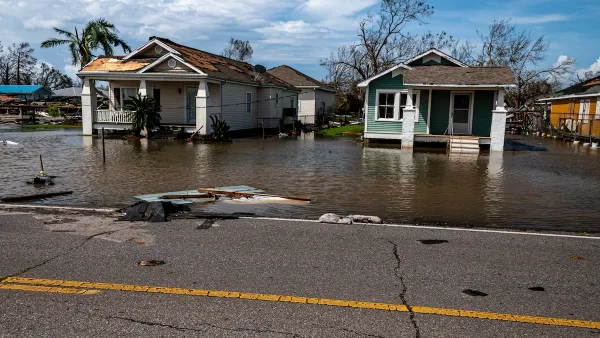Phoenix, once described as 'the world’s least sustainable city' is focusing growth on its downtown and investing in light rail and bike share to attract high tech companies and workers.

"[T]he Phoenix that has been disparaged by so many is undergoing a change," writes Fernanda Santos, Phoenix bureau chief for The New York Times. Santos includes not one but four references to the city's negative reputation.
The change "began when the housing bubble burst and affordable home after affordable home went into foreclosure," adds Santos. "The collapse started in new-housing areas on the fringes [in 2007] and then swept inward, hitting more established areas as the unemployment rate climbed," according to The Arizona Republic
"City officials, intent on revitalizing the place, searched for a new formula, one that focused not on the outer edges of the desert, where there remains plenty of room to expand outward, but on the long-neglected downtown," continues Santos.
These days, there is hardly an empty lot left in the city’s core, and there are as many apartments under construction, or about to be built, as all of those that were built from 1996 to 2008. But, are there enough people to fill them? That is a multibillion-dollar gamble, and Phoenix has gone all in.
Mayor Greg Stanton added transportation to the effort with a successful sales tax measure last summer for extending light rail.
A bike-sharing program survived its first summer, a time of the year when riding a bike, or doing any other outdoor activity for that matter, is borderline heroic.
The thrust of the article is on Stanton attempting to attract Silicon Valley businesses, workers, and millennials to the city, by building a vibrant, dense downtown.
“I don’t want people to move here because we have great golf courses and cheap homes,” Mr. Stanton said in an interview. “What I want is young college graduates from the East Coast moving here, and our college graduates staying here because they see their future here and we have a great urban community.”
FULL STORY: Phoenix Focuses on Rebuilding Downtown, Wooing Silicon Valley

Planetizen Federal Action Tracker
A weekly monitor of how Trump’s orders and actions are impacting planners and planning in America.

Vehicle-related Deaths Drop 29% in Richmond, VA
The seventh year of the city's Vision Zero strategy also cut the number of people killed in alcohol-related crashes by half.

As Trump Phases Out FEMA, Is It Time to Flee the Floodplains?
With less federal funding available for disaster relief efforts, the need to relocate at-risk communities is more urgent than ever.

Berkeley Approves ‘Middle Housing’ Ordinance
The city that invented single-family zoning is finally reckoning with its history of exclusion.

SEPTA Budget Slashes Service by 45 Percent
The Philadelphia-area transit agency is legally tasked with maintaining a balanced budget. Officials hope the state will come to the rescue with additional funding.

Connecticut Governor Vetoes Housing Bill
Gov. Lamont reversed his view on a controversial affordable housing bill that would have required municipalities to zone for set amounts of affordable housing to receive state funding.
Urban Design for Planners 1: Software Tools
This six-course series explores essential urban design concepts using open source software and equips planners with the tools they need to participate fully in the urban design process.
Planning for Universal Design
Learn the tools for implementing Universal Design in planning regulations.
Heyer Gruel & Associates PA
JM Goldson LLC
Custer County Colorado
City of Camden Redevelopment Agency
City of Astoria
Transportation Research & Education Center (TREC) at Portland State University
Camden Redevelopment Agency
City of Claremont
Municipality of Princeton (NJ)


























